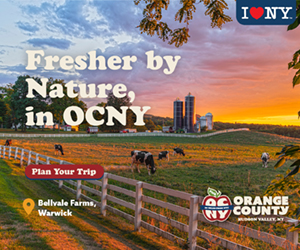Vignoles, a white grape also known as Ravat 51, has become one of the mainstays of the Eastern North American wine industry. This adaptable grape can produce wines that are comparable to wines produced in the Rhine Valley in Germany. Vignoles is similar to Riesling in many ways, both viticulturally and in the wines that it produces. It can be made into simple, semi-dry country wines, or as very complex, sweet, late harvest wines which are very much in vogue.
This white wine grape was developed in the 1930s by J.F. Ravat, a civil engineer from Marcigny, Saône-et-Loire, in France. Monsieur Ravat died in 1940, but his grape breeding work was continued by his son-in-law, Jean Tissier. Ravat’s breeding goal was to develop grape varieties that were more disease resistant than locally-grown vinifera grapes, but which also produced superior wines. Vignoles is a cross of seed parent Subereux (Seibel 6905) by some type of Pinot Noir clone—possible clones being white Pinot Noir, Pinot de Corton, Chardonnay, or Pinot Blanc. While the Vignoles grape was never popular in France, it has generated much interest in the United States and England.
Vignoles can have a variety of tastes and flavor/acid profiles. The color can range from pale straw to golden to almost orange. Made as a bone-dry wine, it can be clean and crisp, with a touch of tartness of green apples. The fruit is citrus in character, with underlying tones of peach and tropical fruit that works well with oak aging to make the wine more complex.
Made as a semi-sweet or late harvest wine, Vignoles can have pronounced floral tastes of apricots, pineapples, honey, peaches, orange rinds, melons, guava, and orange blossoms, with a somewhat tart finish. The tart finish consists of acids found in almonds, honey or Grand Marnier. The residual sugar/acid balance can add to the wine’s complexity and mouth feel while providing a clean edge to the finish. These wines are often compared to German dessert wines, but they can also be similar to Sauternes. The body is thick, viscous, syrupy, and pungent like Chinese sweet and sour sauce.
In the vineyard, Vignoles lend themselves to this style of wine because they have high acid and can attain sugar levels that reach 30 brix (a measurement of sugar in fruit) which is needed to produce quality dessert wines. More importantly, this grape has thick skins so clusters can hang on the vine until late November. As they hang and age, they do not rot as some other varieties do, but become raisins that contain very sweet juice that is balanced by a solid acid foundation. While botrytis (a beneficial mold that helps to mummify grapes, transforming them into raisins that are desirable for wine production) affects the Vignoles grape, it actually enhances its flavors, giving Vignoles wines a full, honey-like feel in both taste, mouth feel, and body. This makes Vignoles very suitable for the production of quality, late harvest dessert wines.
While Vignoles has a unique and pronounced flavor profile on its own, it is a good grape that can also be used to enhance blends. It adds complexity, color, and weight to white wine blends, although no more than 20 percent should be added to the blend unless the winemaker intends to make a light, Vignoles-like wine.
Vignoles is a good solid grower in the field, produces plenty of clean fruit, and makes both serious and fun wines for consumption. This grape can be readily grown in the region and should continue to have a presence in the Hudson Valley winemaking industry for some time to come.





